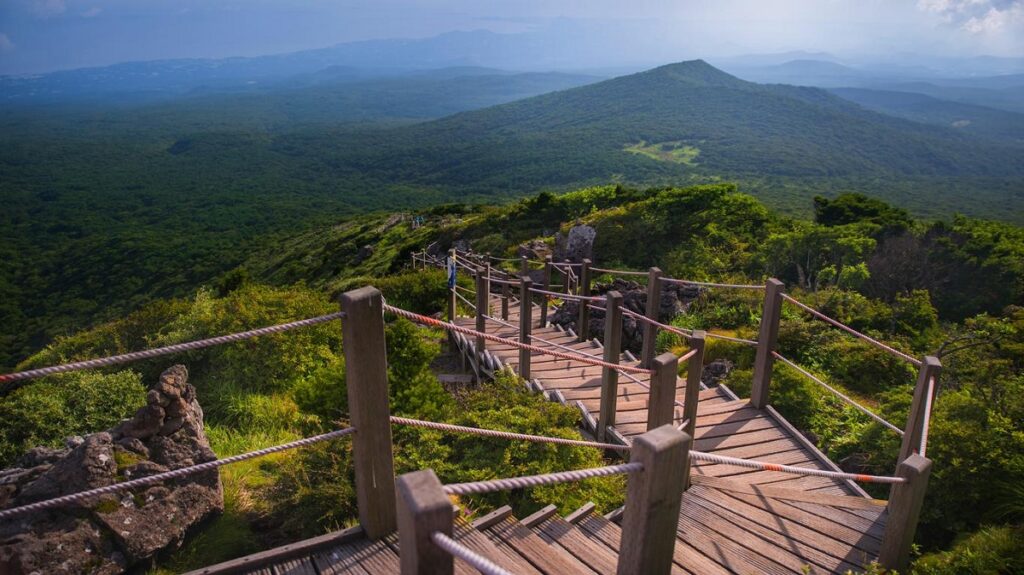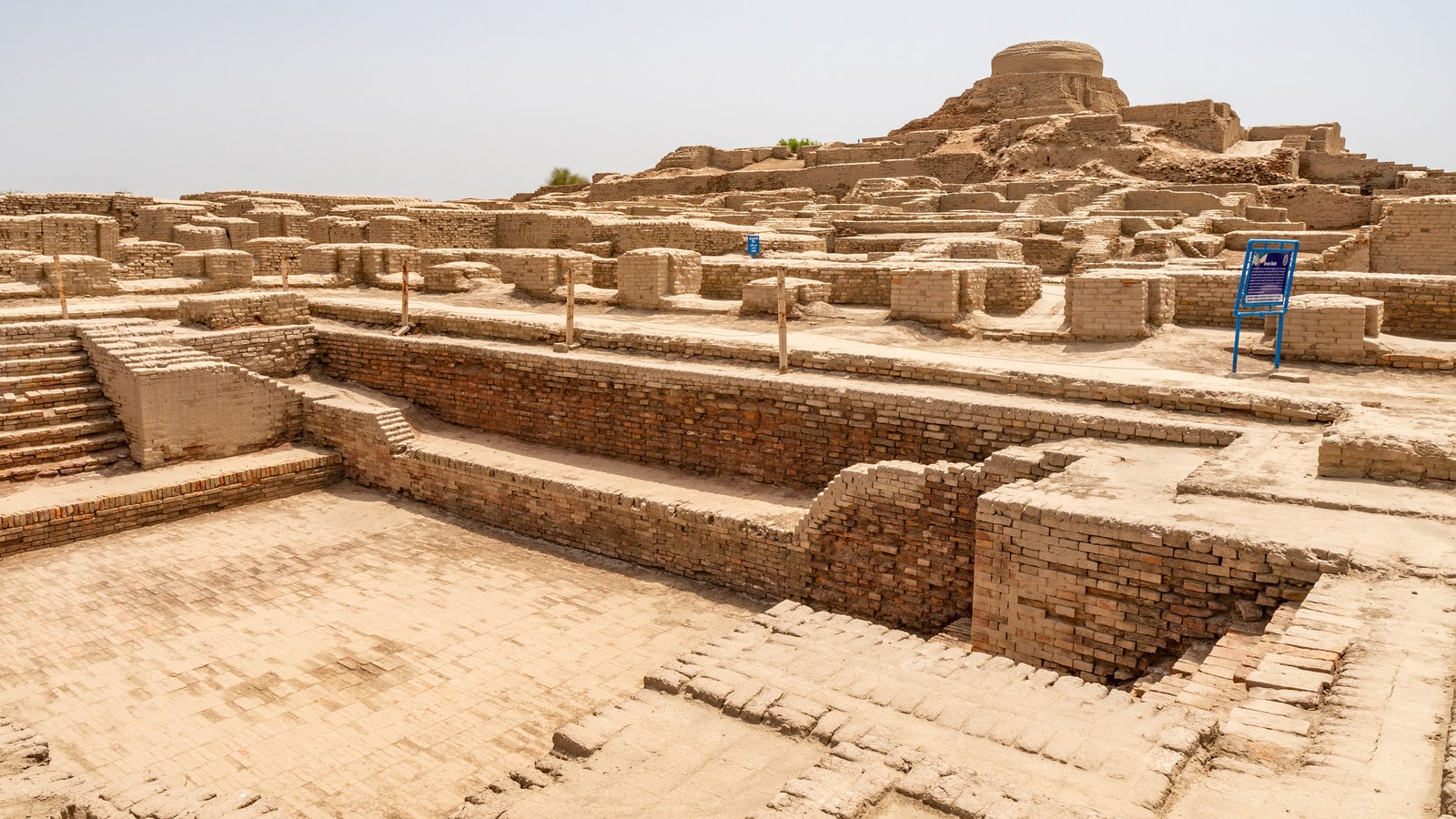Guide to Hallasan: South Korea’s Only UNESCO Birosphere Reserve
Nestled in the heart of Jeju Island, Hallasan National Park offers an enchanting escape into nature’s untouched beauty. Dominated by Hallasan Mountain, the park is not only a UNESCO Biosphere Reserve but also an outdoor playground for adventurers and nature lovers alike.
At the center of the park stands Hallasan, an imposing shield volcano. It’s the tallest peak in South Korea’s volcanic island, offering a variety of trails suited to all skill levels. For seasoned hikers, the summit trail provides a challenging yet rewarding climb, with breathtaking views of the island and beyond.
Whether you’re hiking its majestic peaks, immersing yourself in its unique ecosystems, or just savoring panoramic views, Hallasan National Park is an experience like no other. Here’s our comprehensive guide to Hallasan National Park;
Please Download Our Mobile App here.
Overview of Hallasan National Park
Located on Jeju Island off South Korea’s southern coast, Hallasan National Park covers 59.12 square miles (153.11 square kilometers). It’s the 10th smallest of South Korea’s 22 national parks. Unlike other national parks in South Korea, it is not managed by the Korean National Park Service. It is also the only park in the country that holds the distinction of being a UNESCO World Heritage Site.
The park’s centerpiece is Hallasan, the tallest mountain in South Korea, reaching 6,388 feet (1,947 meters). Along with Jirisan and Seoraksan, Hallasan is one of the three great mountains of the nation. The mountain holds a special place in South Korean culture, with locals often saying, “Jeju Island is Hallasan; and Hallasan is Jeju.”
The park’s diverse ecosystems vary with elevation, with subtropical plants at lower altitudes giving way to alpine vegetation as you climb higher. Of the about 4,000 plant species found here, 10 percent are endangered, adding to the park’s ecological significance. Hallasan National Park is not just a natural marvel but a cultural icon, drawing visitors from around the world to experience its beauty and biodiversity.
Wildlife in Hallasan National Park

While not particularly renowned for its wildlife, Hallasan National Park offers visitors the chance to glimpse a variety of creatures. These include; badgers, boars, Formosan deer, gazelles, roe deer, and weasels. However, its true appeal lies in its status as a haven for birdwatchers.
With Jeju Island hosting 364 species of birds, many of which nest or pass through the park area, it is a prime spot for avid bird enthusiasts. The park’s diverse habitats, ranging from lush forests to volcanic craters, provide a rich environment for both resident and migratory birds.
Best Time to Visit Hallasan National Park
The best times to visit Hallasan National Park are during the spring (April to June) and autumn (September to November). During these months, the park is at its most scenic and hiking-friendly. In spring, the park bursts with the delicate beauty of cherry blossoms and vibrant greenery.
Autumn offers its own spectacle, as the landscape transforms into a stunning canvas of reds, oranges, and yellows. This makes it an ideal time for photographers and nature enthusiasts alike.
Winter, however, is best avoided due to heavy snowfall and strong winds that can make hiking difficult and even dangerous. It’s always a good idea to check weather conditions before your visit to ensure a safe and enjoyable experience.
Getting to Hallasan National Park

To reach Hallasan National Park in South Korea, you have a few travel options depending on your preferences. If you’re flying in, you can book a direct flight to Jeju International Airport, which connects to several major cities worldwide.
For those seeking a more scenic route, you can take a ferry from the mainland to Jeju Island, enjoying ocean views along the way. Once you’re on the island, you can take a bus to the park entrance. Be sure to let the ticket booth staff at the inter-city bus terminal know your destination.
If you’re visiting during winter, note that buses may leave earlier than expected, but taxis are available for a flexible alternative. Alternatively, you can drive directly to the park, where all entrances are accessible by car, and park near the entrance to the Seongpanak Trail.
Other Activities in Hallasan National Park
Hallasan National Park on Jeju Island, South Korea, offers a diverse range of activities for outdoor enthusiasts and nature lovers. With several hiking trails catering to different levels of experience, visitors can enjoy panoramic views of the island and its volcanic landscape.
The Gwaneumsa and Seongpanak Trails both ascend to the summit of Hallasan, providing stunning vistas along their 5.4-mile and 5.96-mile routes, respectively. For those seeking shorter hikes, the Eorimok, Donnaeko, and Yeongsil Trails offer scenic paths that lead to areas like the Witseoreum Shelter.
Beyond hiking, the park’s volcanic craters, mountain lakes, and wildflower views present additional opportunities to immerse in the natural beauty of the area. Whether you’re gazing at the sweeping landscape, exploring the geological wonders, or simply soaking in the tranquility, Hallasan offers a memorable experience for all who visit.
Park Fees in Hallasan National Park

Hallasan National Park does not charge an entrance fee, but visitors should be aware of parking fees and daily permit restrictions for certain trails. Parking fees vary depending on the type of vehicle. Typically, two-wheel vehicles pay 500 won ($0.38), compact cars (under 1,000 cc) are charged 1,000 won ($0.75) whil mid-size cars (under 4-ton trucks) pay 1,800 won ($1.35).
The park also has a strict fees structure for buses and large vehicles. Small buses (11-15 seats) pay 3,000 won ($2.27), and mid-large buses (over 16 seats or 4-ton trucks) are charged 3,700 won ($2.80).
For hikers, the Gwaneumsa and Seongpanak trails to the summit of Hallasan are subject to daily permit restrictions. These permits, available for free online at the Hallasan National Park website, require a Korean ID or passport for registration.
FAQs
How long does it take to hike Hallasan?
The Hallasan hike, located near Seogwipo-si on Jeju Island, is a challenging 11.5-mile out-and-back trail that typically takes hikers around 7 hours and 19 minutes to complete. The route offers stunning views and a rigorous ascent, making it suitable for experienced hikers looking to test their endurance.
Is Hallasan easy to climb?
Climbing Hallasan is not an easy feat. The hike spans 9.6 kilometers one way, and along the route, you’ll find signs marking your progress. However, the path itself is more of a rugged, rocky scramble than a smooth trail, with uneven terrain that becomes progressively more challenging as you gain elevation. The higher you climb, the more demanding it becomes, so it’s essential to plan accordingly.
Conclusion
Hallasan National Park stands as one of South Korea’s most spectacular natural treasures. Its rugged peaks, diverse ecosystems, and spiritual heritage make it a must-see destination for anyone visiting Jeju Island.





